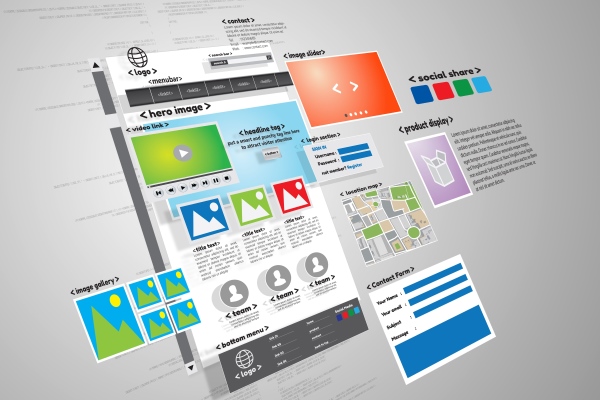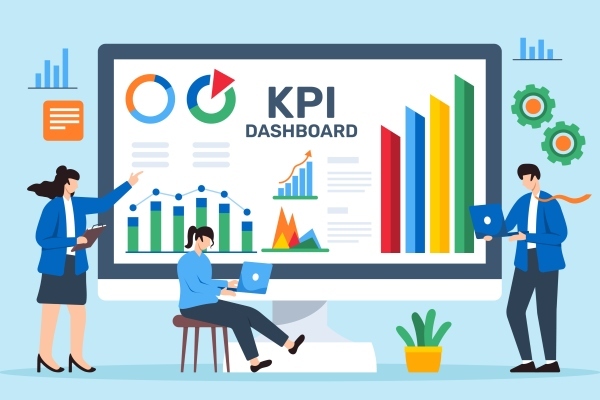
Top 10 Techniques for Boosting Your Website’s SEO
Search Engine Optimisation (SEO) is the practice of improving the quality and quantity of website traffic by increasing the visibility of a website or a web page to users of a web search engine. SEO is crucial for enhancing a website’s visibility on search engine results pages (SERPs), leading to increased organic traffic. High rankings on SERPs are essential for attracting visitors, as users tend to click on the top results. This article will provide you with actionable and practical tips to improve your website’s SEO, ensuring better visibility, increased traffic, and ultimately, higher conversion rates.
1. Conduct Comprehensive Keyword Research
Keyword research is the process of identifying the words and phrases that potential customers use when searching for products, services, or information related to your business. It plays a vital role in SEO by helping you understand what your audience is searching for, allowing you to optimise your content to meet their needs. Effective keyword research involves using tools like Google Keyword Planner, Ahrefs, and SEMrush to find relevant keywords with high search volume and low competition. By targeting high-value keywords, you can attract more qualified traffic to your site, improving your chances of converting visitors into customers.
2. Optimise On-Page Elements
On-page SEO elements, such as title tags, meta descriptions, and headers, are crucial for improving your website’s search engine ranking. Title tags should be concise and include primary keywords to accurately represent the page’s content. Meta descriptions should provide a brief, compelling summary of the page, incorporating relevant keywords to entice users to click through. Header tags (H1, H2, H3) help structure your content, making it easier for search engines to understand and rank. Use H1 for the main title, H2 for section titles, and H3 for subsections, ensuring that keywords are naturally integrated to enhance SEO without overstuffing.
3. Create High-Quality Content
High-quality content is the backbone of effective SEO. Search engines prioritise content that is engaging, relevant, and original, as it provides real value to users. To produce such content, focus on understanding your audience’s needs and interests, and create well-researched, informative articles that address their queries. Use a clear and compelling writing style, and incorporate keywords naturally to enhance SEO. Additionally, the length and structure of your content matter; longer, well-structured articles tend to perform better in search rankings. Break up text with headings, subheadings, bullet points, and images to improve readability and user experience.
4. Improve Website Load Speed
Website load speed is critical for both user experience and SEO. Faster-loading websites provide a better user experience, reducing bounce rates and increasing user engagement. Search engines, such as Google, also use load speed as a ranking factor, meaning that a slower site can negatively impact your SEO performance. To measure and analyse your website’s speed, use tools like Google PageSpeed Insights, GTmetrix, and Pingdom. Techniques to enhance load speed include optimising images by compressing them without losing quality, minimising and combining files (CSS, JavaScript), reducing the number of HTTP requests, enabling browser caching, and using Content Delivery Networks (CDNs) to distribute content more efficiently.
5. Ensure Mobile-Friendliness
Mobile optimisation is crucial for SEO, as a significant portion of web traffic comes from mobile devices. Google prioritises mobile-friendly websites in its search rankings, making mobile optimisation essential for visibility and traffic. Use Google’s Mobile-Friendly Test tool to evaluate how easily users can navigate your site on mobile devices. Tips for creating a responsive design include using flexible layouts, scalable images, and media queries to ensure your site adapts to different screen sizes. Additionally, prioritise fast load times on mobile, optimise touch elements for ease of use, and streamline navigation to enhance the overall mobile user experience.
6. Implement Internal Linking
Internal linking is a powerful SEO strategy that involves linking to other pages within your website. It helps search engines understand the structure and hierarchy of your site, distributing page authority and ranking power more effectively. Internal links guide visitors to related content, increasing engagement and reducing bounce rates. To create an effective internal linking strategy, ensure that links are relevant and natural, use descriptive anchor text, and link to high-priority pages. Tools like Yoast SEO, Screaming Frog, and Ahrefs can help manage and optimise your internal links, identifying opportunities to improve your site’s overall SEO performance.
7. Build Quality Backlinks
Backlinks, or inbound links, are links from other websites to your site, and they play a critical role in SEO by signalling to search engines that your content is valuable and trustworthy. High-quality backlinks from reputable sites can significantly boost your search engine rankings. To acquire these links, employ strategies such as guest blogging on authoritative sites, conducting outreach to industry influencers, and creating shareable content like infographics. Tools like Moz, SEMrush, and Ahrefs can help you track and analyse your backlinks, identify new opportunities, and ensure your backlink profile remains strong and beneficial for your SEO efforts.
8. Use Alt Text for Images
Alt text, or alternative text, is crucial for both accessibility and SEO. It provides a textual description of images, helping visually impaired users understand content through screen readers. For SEO, alt text enables search engines to index and understand images, potentially improving your search rankings. Best practices for writing alt text include being descriptive, concise, and incorporating relevant keywords naturally without keyword stuffing. Tools like WordPress plugins (e.g., Yoast SEO), Google’s Lighthouse, and image optimisation tools like TinyPNG can assist in managing and optimising your alt text, ensuring that all images contribute positively to your site’s accessibility and SEO.
9. Utilise SEO Plugins
SEO plugins are essential tools for optimising your website, simplifying the implementation of SEO best practices. These plugins offer numerous benefits, such as analysing content for keyword usage, generating XML sitemaps, and improving meta tags and descriptions. Popular SEO plugins include Yoast SEO and All in One SEO Pack, both of which provide comprehensive features to enhance your site’s SEO. Key features to look for in an SEO plugin include user-friendly interfaces, detailed analytics, automatic XML sitemap generation, content optimisation tips, and integration with social media. Using these plugins can significantly improve your site’s search engine visibility and overall performance.
10. Monitor and Analyse SEO Performance
Regular monitoring and analysis of SEO performance are essential for maintaining and improving your website’s search engine rankings. Consistent tracking helps identify what strategies are working and highlights areas needing improvement. Tools like Google Analytics and Google Search Console provide valuable insights into key metrics, such as organic traffic, bounce rates, and keyword rankings. By interpreting this data, you can make informed decisions and adjust your SEO strategies accordingly. For example, if certain keywords are underperforming, you can refine your content or focus on different keywords. Continuous monitoring ensures your SEO efforts remain effective and aligned with evolving search engine algorithms.
Conclusion
Implementing these top 10 SEO strategies can significantly enhance your website’s visibility and drive more organic traffic. By conducting comprehensive keyword research, optimising on-page elements, creating high-quality content, and improving website load speed, you lay a solid foundation for SEO success. Additionally, ensuring mobile-friendliness, building quality backlinks, and utilising SEO plugins further boost your site’s performance. Remember, SEO is an ever-evolving field, requiring continuous learning and adaptation. Stay updated with the latest trends and algorithm changes to maintain your competitive edge. Embrace these tips and invest in ongoing SEO efforts to achieve sustained growth and success for your website.







